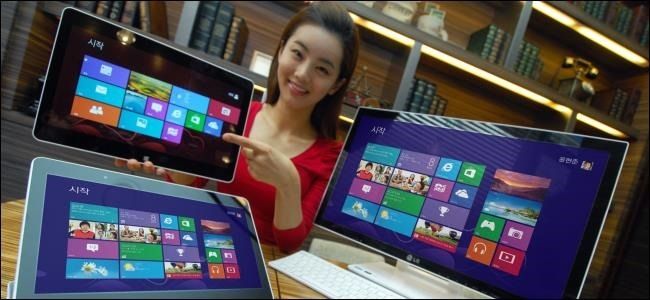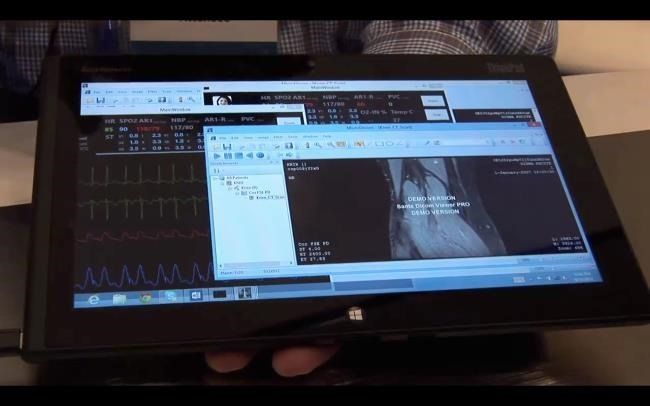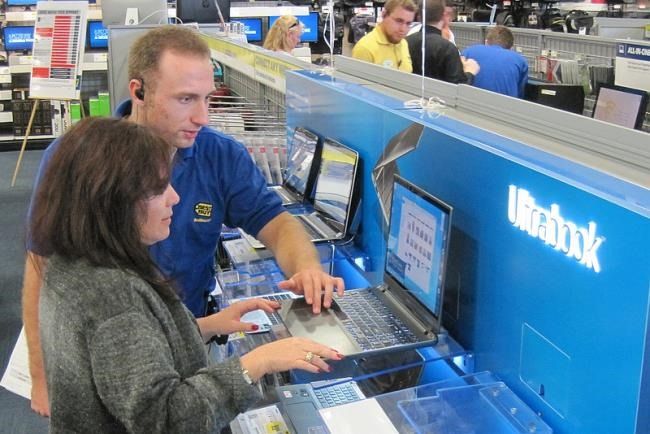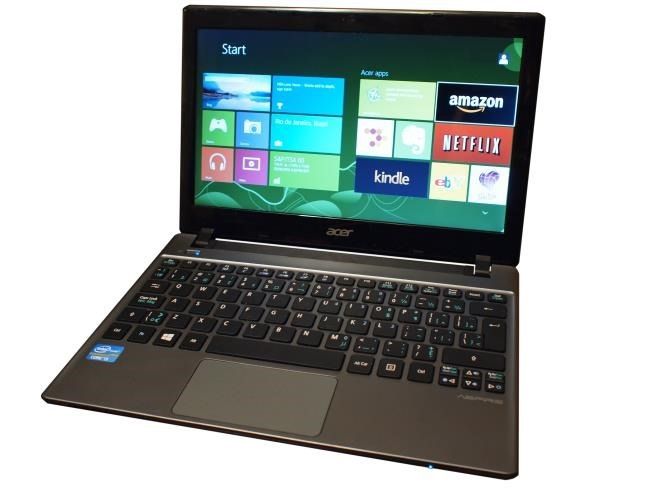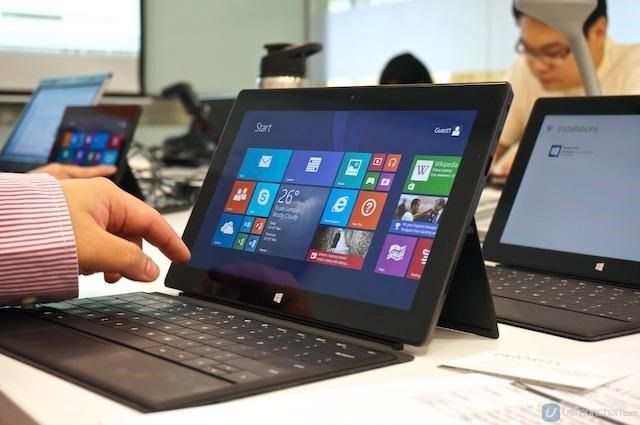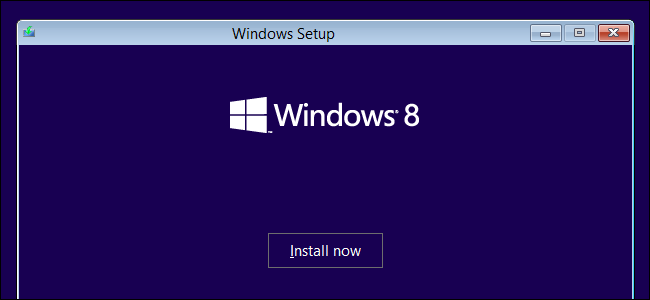Quick Links
Bloatware is still a big problem on new Windows 8 and 8.1 PCs. Some websites will tell you that you can easily get rid of manufacturer-installed bloatware with Windows 8's Reset feature, but they're generally wrong.
This junk software often turns the process of powering on your new PC from what could be a delightful experience into a tedious slog, forcing you to spend hours cleaning up your new PC before you can enjoy it.
Why Refreshing Your PC (Probably) Won't Help
Manufacturers install software along with Windows on their new PCs. In addition to hardware drivers that allow the PC's hardware to work properly, they install more questionable things like trial antivirus software and other nagware. Much of this software runs at boot, cluttering the system tray and slowing down boot times, often dramatically. Software companies pay computer manufacturers to include this stuff. It's installed to make the PC manufacturer money at the cost of making the Windows computer worse for actual users.
Windows 8 includes "Refresh Your PC" and "Reset Your PC" features that allow Windows users to quickly get their computers back to a fresh state. It's essentially a quick, streamlined way of reinstalling Windows. If you install Windows 8 or 8.1 yourself, the Refresh operation will give your PC a clean Windows system without any additional third-party software.
However, Microsoft allows computer manufacturers to customize their Refresh images. In other words, most computer manufacturers will build their drivers, bloatware, and other system customizations into the Refresh image. When you Refresh your computer, you'll just get back to the factory-provided system complete with bloatware.
It's possible that some computer manufacturers aren't building bloatware into their refresh images in this way. It's also possible that, when Windows 8 came out, some computer manufacturer didn't realize they could do this and that refreshing a new PC would strip the bloatware. However, on most Windows 8 and 8.1 PCs, you'll probably see bloatware come back when you refresh your PC.
It's easy to understand how PC manufacturers do this. You can create your own Refresh images on Windows 8 and 8.1 with just a simple command, replacing Microsoft's image with a customized one. Manufacturers can install their own refresh images in the same way. Microsoft doesn't lock down the Refresh feature.
Desktop Bloatware is Still Around, Even on Tablets!
Not only is typical Windows desktop bloatware not gone, it has tagged along with Windows as it moves to new form factors. Every Windows tablet currently on the market -- aside from Microsoft's own Surface and Surface 2 tablets -- runs on a standard Intel x86 chip. This means that every Windows 8 and 8.1 tablet you see in stores has a full desktop with the capability to run desktop software. Even if that tablet doesn't come with a keyboard, it's likely that the manufacturer has preinstalled bloatware on the tablet's desktop.
Yes, that means that your Windows tablet will be slower to boot and have less memory because junk and nagging software will be on its desktop and in its system tray. Microsoft considers tablets to be PCs, and PC manufacturers love installing their bloatware. If you pick up a Windows tablet, don't be surprised if you have to deal with desktop bloatware on it.
Microsoft Surfaces and Signature PCs
Microsoft is now selling their own Surface PCs that they built themselves -- they're now a "devices and services" company after all, not a software company.
One of the nice things about Microsoft's Surface PCs is that they're free of the typical bloatware. Microsoft won't take money from Norton to include nagging software that worsens the experience. If you pick up a Surface device that provides Windows 8.1 and 8 as Microsoft intended it -- or install a fresh Windows 8.1 or 8 system -- you won't see any bloatware.
Microsoft is also continuing their Signature program. New PCs purchased from Microsoft's official stores are considered "Signature PCs" and don't have the typical bloatware. For example, the same laptop could be full of bloatware in a traditional computer store and clean, without the nasty bloatware when purchased from a Microsoft Store.
Microsoft will also continue to charge you $99 if you want them to remove your computer's bloatware for you -- that's the more questionable part of the Signature program.
Windows 8 App Bloatware is an Improvement
There's a new type of bloatware on new Windows 8 systems, which is thankfully less harmful. This is bloatware in the form of included "Windows 8-style", "Store-style", or "Modern" apps in the new, tiled interface. For example, Amazon may pay a computer manufacturer to include the Amazon Kindle app from the Windows Store. (The manufacturer may also just receive a cut of book sales for including it. We're not sure how the revenue sharing works -- but it's clear PC manufacturers are getting money from Amazon.)
The manufacturer will then install the Amazon Kindle app from the Windows Store by default. This included software is technically some amount of clutter, but it doesn't cause the problems older types of bloatware does. It won't automatically load and delay your computer's startup process, clutter your system tray, or take up memory while you're using your computer.
For this reason, a shift to including new-style apps as bloatware is a definite improvement over older styles of bloatware. Unfortunately, this type of bloatware has not replaced traditional desktop bloatware, and new Windows PCs will generally have both.
Windows RT is Immune to Typical Bloatware, But...
Microsoft's Windows RT can't run Microsoft desktop software, so it's immune to traditional bloatware. Just as you can't install your own desktop programs on it, the Windows RT device's manufacturer can't install their own desktop bloatware.
While Windows RT could be an antidote to bloatware, this advantage comes at the cost of being able to install any type of desktop software at all. Windows RT has also seemingly failed -- while a variety of manufacturers came out with their own Windows RT devices when Windows 8 was first released, they've all since been withdrawn from the market. Manufacturers who created Windows RT devices have criticized it in the media and stated they have no plans to produce any future Windows RT devices.
The only Windows RT devices still on the market are Microsoft's Surface (originally named Surface RT) and Surface 2. Nokia is also coming out with their own Windows RT tablet, but they're in the process of being purchased by Microsoft. In other words, Windows RT just isn't a factor when it comes to bloatware -- you wouldn't get a Windows RT device unless you purchased a Surface, but those wouldn't come with bloatware anyway.
Removing Bloatware or Reinstalling Windows 8.1
While bloatware is still a problem on new Windows systems and the Refresh option probably won't help you, you can still eliminate bloatware in the traditional way. Bloatware can be uninstalled from the Windows Control Panel or with a dedicated removal tool like PC Decrapifier, which tries to automatically uninstall the junk for you.
You can also do what Windows geeks have always tended to do with new computers -- reinstall Windows 8 or 8.1 from scratch with installation media from Microsoft. You'll get a clean Windows system and you can install only the hardware drivers and other software you need.
Unfortunately, bloatware is still a big problem for Windows PCs. Windows 8 tries to do some things to address bloatware, but it ultimately comes up short. Most Windows PCs sold in most stores to most people will still have the typical bloatware slowing down the boot process, wasting memory, and adding clutter.
Image Credit: LG on Flickr, Intel Free Press on Flickr, Wilson Hui on Flickr, Intel Free Press on Flickr, Vernon Chan on Flickr

